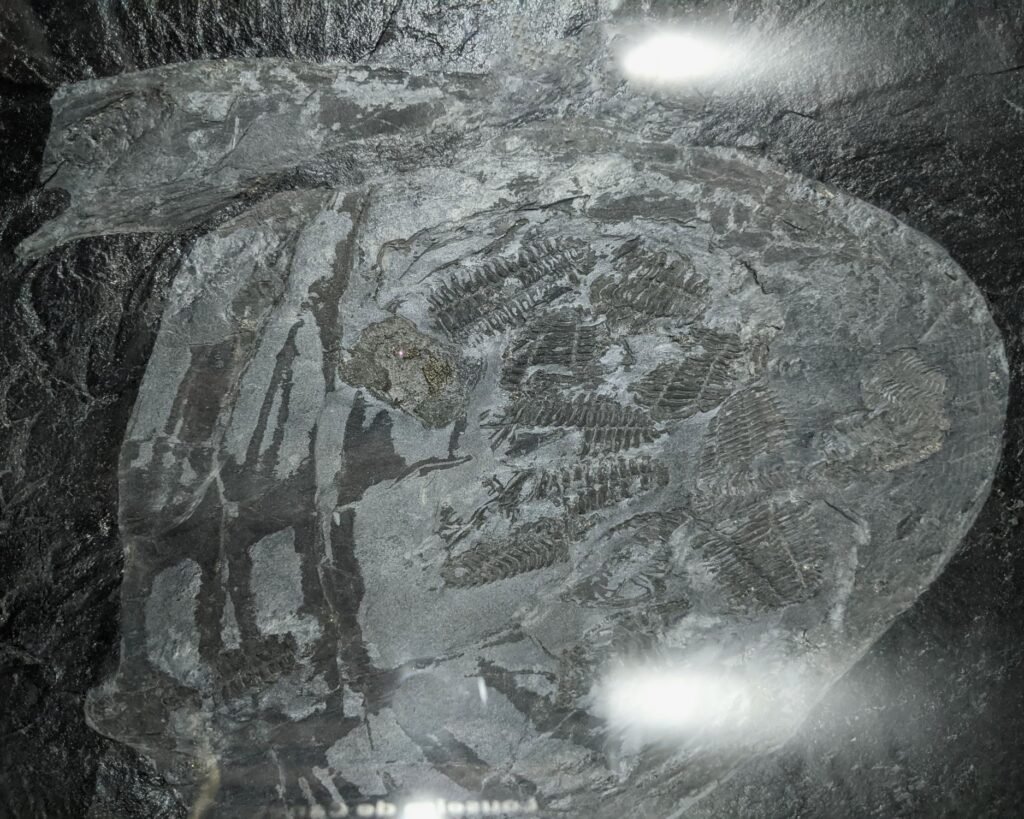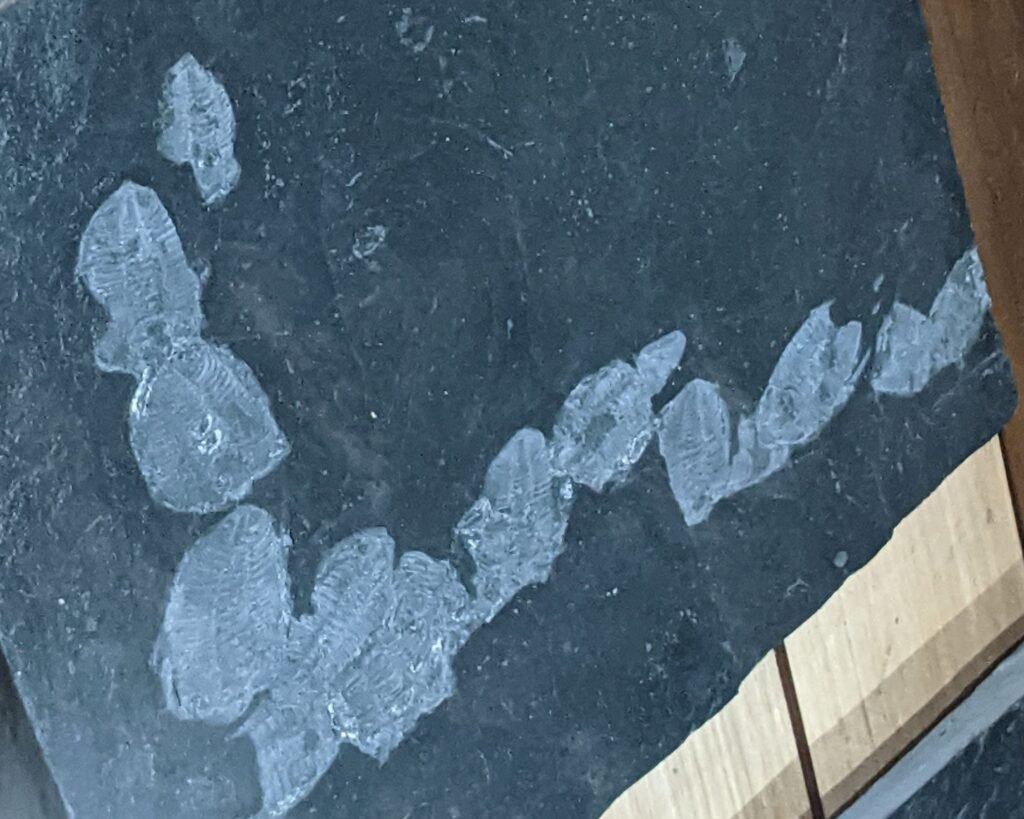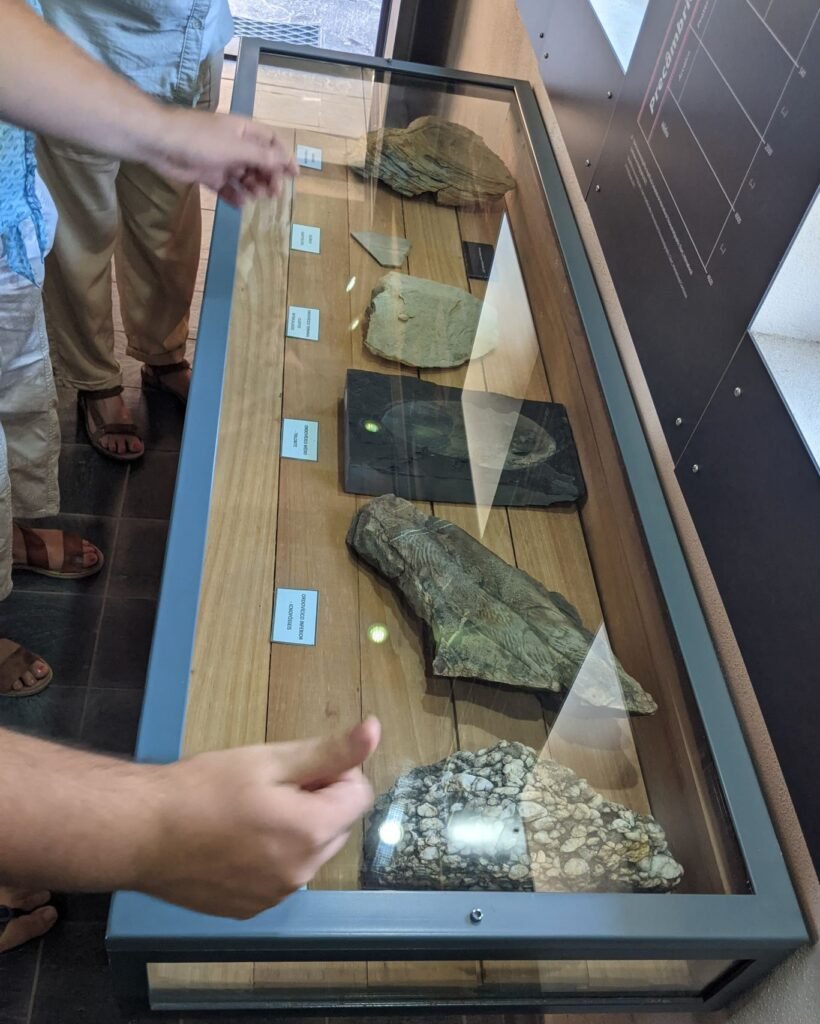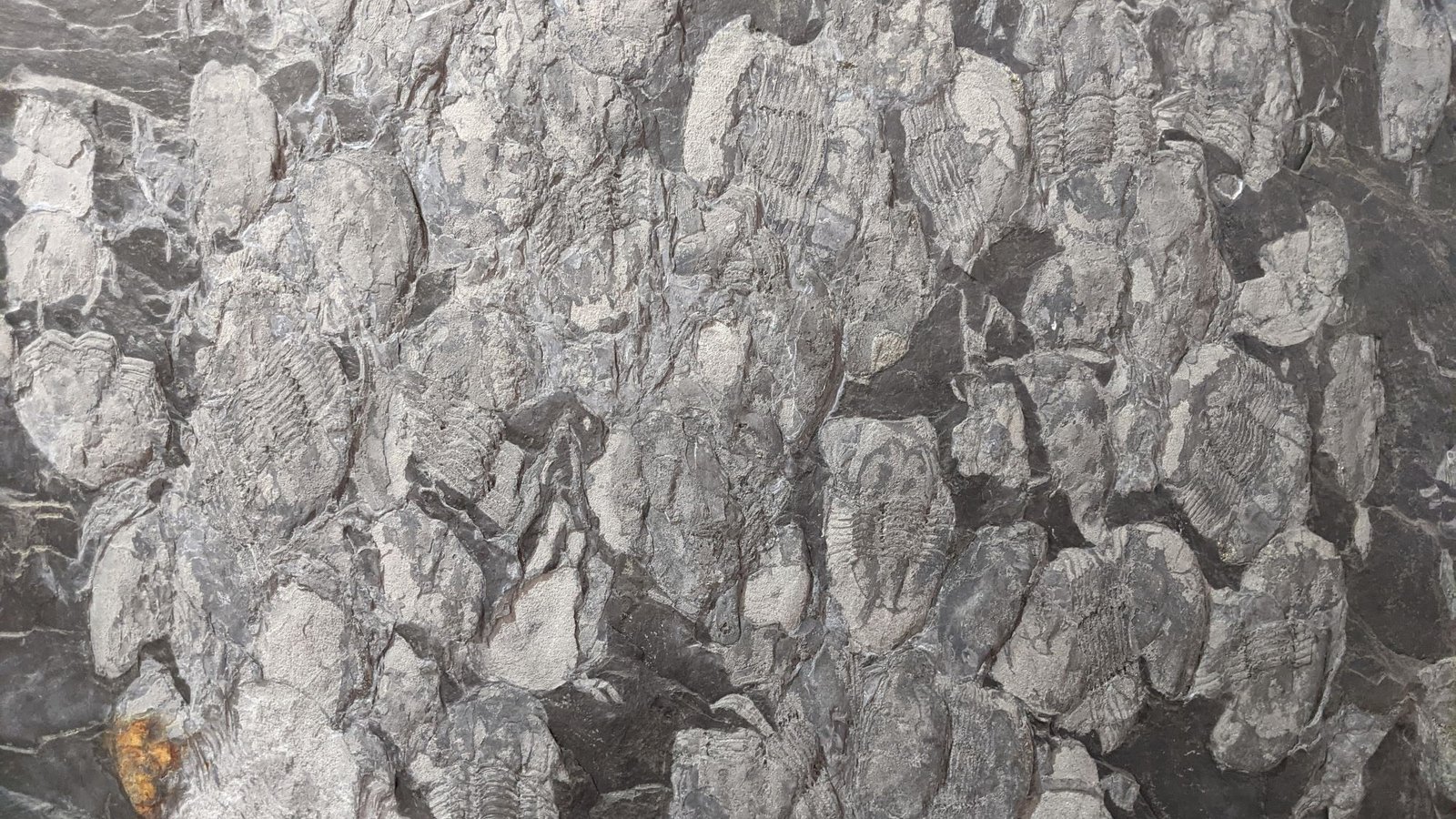In the gallery, the rectangular sheets of black rock line the walls all around. White-grey images adorn each one. Some are of individual animals, others of groups. Many simply show the trilobites as they had lived (or at least, as they had died). Others showed evidence of specific behaviours such as traveling in a column, or sheltering their young. The depths of time yawn before you: these animals lived five hundred million years ago. The dinosaurs were closer to us in time than to the trilobites: if today was Saturday, and the dinosaurs lived yesterday, then the trilobites lived Monday. The first animals ever lived on Sunday.






This museum, officially the Geological Interpretive Center of Canelas, was the work of Manuél Valério Figueiredo. While running the business of cutting slate sheets for construction and housing, he noticed that some sheets contained fossils of shells or trilobites and set any such rocks aside. Over the years, he collected many fossils, including some of the largest trilobite fossils in the world, and eventually founded the Trilobite Museum to display his findings. Now the museum, located in “Valério’s Quarry,” shows off the best examples, along with other examples of the local geology and history.
Trilobites are some of the most commonly recognized and famous fossilized animals. They have been known to humans for many years …there are even examples where early humans made amulets or other jewelry from fossilized trilobites. Trilobite fossils have been scientifically studied for hundreds of years, and their abundance has helped shape scientific understanding of evolution. Trilobites were early arthropods that lived in the Cambrian oceans, and thousands of species existed, ranging in size from only a few millimeters to 70 cm.
His son, Manuél Figueiredo Jr, manages the museum and gives guided tours. His passion for his father’s work and the history of the fossils is put to excellent use as he explains the significance of the pieces in the museum and the history of life on Earth as represented in these fossils.
Situated inside the Arouca Geopark, a UNESCO-certified park of significant geological and other scientific significance (which also highlights cultur, education, and tourism), the museum offers much of interest. Visitors can visit the slate factory, hunt for trilobites among the offcasts of the quarry, or visit one of a number of trails on the “Paleozoic Route” around the surrounding area.
Location
The museum is in the Arouca Geoparque, which is centrally inland just south of Porto in the district of Aveiro. From Arouca, the largest nearby town, the roads leading to Canelas are signposted for the “Passadiços de Paiva” (the walkways and trail along the Paiva River). There are also some signposts in Arouca pointing to the “Museu das Trilobites.” From Alvarenga, which is a smaller town closer to the Passadiços de Paiva (and the famous 516 Arouca suspension bridge), follow the signs to Arouca. Once you’re on the R326 between Arouca and Alvarenga, the museum is well signposted. The museum is easily accessible, located just off the main road, with ample parking.
Links
- The museum’s website (in English and Portuguese)
- A description of the museum (in English and Portuguese) in the Arouca Geopark’s website
- A description of the quarry and fossils (in English) as a Geosite of the International Commission on Geoheritage
- Paleozoic Route (in Portuguese) on AllTrails
- A TV show from RTP 2 (in Portuguese) about the museum and Manuél Valério Figueiredo
- “Viver Aqui” TV report (in Portuguese) about the museum
- Trilobite article (in English) from Wikipedia
Nearby
There are many sites of interest in the Arouca Geopark. Besides the adjacent Paleozoic Route hiking trails, there are many nearby sites of ichnofossils. There are also several dolmens (“mamoas”) in the region, as well as some prehistoric rock carvings. The geopark has plans to create an “archaeological route,” but as of this writing has not yet done so.
